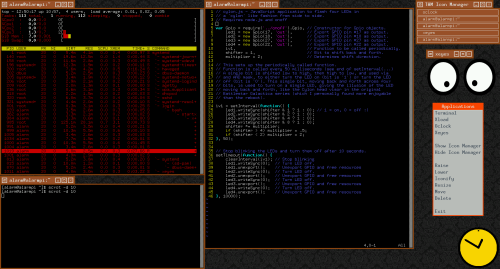 I’ve rattled on in the past about going in all Apple, including, and especially, the Macbook Pro Retina. While some of the solutions I’ve developed over the past few months have seemed Rube-Goldbergish (especially using a Linux VM to manipulate a microSDHC card for the Raspberry Pi 3), the fact I keep coming back to the Mac and OS X is a testament to how it all works together for me. After getting the VM to work the Ubuntu notebook is sitting quietly in its bag in the closet, with the bag gathering dust. That’s a complete turnaround from a post of nearly two years ago when I declared Ubuntu 14 the best Linux distribution, and as an OS, as good as any other, including OS X. A lot has changed for me in two years.
I’ve rattled on in the past about going in all Apple, including, and especially, the Macbook Pro Retina. While some of the solutions I’ve developed over the past few months have seemed Rube-Goldbergish (especially using a Linux VM to manipulate a microSDHC card for the Raspberry Pi 3), the fact I keep coming back to the Mac and OS X is a testament to how it all works together for me. After getting the VM to work the Ubuntu notebook is sitting quietly in its bag in the closet, with the bag gathering dust. That’s a complete turnaround from a post of nearly two years ago when I declared Ubuntu 14 the best Linux distribution, and as an OS, as good as any other, including OS X. A lot has changed for me in two years.
Biggest driver for me is overall quality. The physical machine, with its 16GB of RAM, 1TB HDD, and Retina display, matches with OS X. It invites me to want to work with it, far more so than either the Ubuntu notebook and the Windows notebook. I should point out that both notebooks were manufactured by Samsung. Everything about the MBP works smoothly and quickly. Not so much with Linux or Windows, especially Windows. The more I grow away from Windows 10, the less I remember past actions with fondness. I just don’t like the jarring manner that Microsoft moved from Windows 8 to Windows 10. OS X seems refined; Windows 10 seems slapdash and at certain points just ugly. Ubuntu 15.10 seems to hew more to the OS X philosophy of look and feel, and thus is easier for me to work with. Even the CentOS 7 VM (CentOS 7 being a rebuild of Redhat Enterprise Linux 7 without Redhat’s intellectual property) feels better to work with than Windows 10. And part of that is due to it executing on the MBP hardware.
I keep thinking Apple is going to do something outrageous that will drive me away from OS X specifically, but I don’t think that’s going to happen, at least not anytime soon. Rather than loose sleep worrying about what might happen, I’ll continue to enjoy what I have. Enjoyment of tools like the MBP and OS X is the secret sauce to high productivity. When you enjoy what you’re doing with what you’re using you just don’t want to stop.


You must be logged in to post a comment.